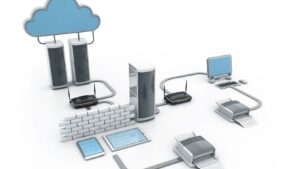
In today’s fast-paced world, smart devices and sensors have seamlessly woven themselves into the fabric of everyday life. From smart thermostats that learn users’ temperature preferences to wearable fitness trackers monitoring vital signs, these innovations are transforming how people interact with their surroundings. As technology advances, the integration of smart devices and sensors continues to expand, offering unprecedented convenience and efficiency.
These intelligent tools are not just confined to personal use; they’re revolutionizing industries across the board. In healthcare, for instance, sensors enable remote monitoring of patients, ensuring timely interventions. In agriculture, smart sensors optimize irrigation and soil management, boosting crop yields. As society becomes increasingly connected, the potential applications of smart devices and sensors are virtually limitless, paving the way for a smarter, more responsive world.
What Is Comprised Of Millions Of Smart Devices And Sensors Connected To The Internet?
 Smart devices and sensors significantly improve connectivity and data management. They play a vital role in transforming how industries operate by collecting real-time data, thus streamlining processes and enhancing decision-making efficiency.
Smart devices and sensors significantly improve connectivity and data management. They play a vital role in transforming how industries operate by collecting real-time data, thus streamlining processes and enhancing decision-making efficiency.
For instance, in healthcare, wearable devices monitor vital signs and alert medical professionals to abnormalities, improving patient outcomes. In manufacturing, IoT sensors track machinery performance, reducing downtime through predictive maintenance.
In agriculture, sensors optimize resource use by measuring soil moisture and weather conditions to provide precise irrigation solutions. This efficient resource management supports sustainable farming practices and improves crop yields. In the energy sector, smart grids adjust electricity distribution based on demand, reducing waste and lowering costs.
Homes benefit too, with smart devices offering convenience and energy savings. Smart thermostats adjust heating and cooling based on occupancy patterns, while smart lighting responds to natural light levels. These innovations contribute to reduced energy consumption and lower utility bills.
Smart Homes And Automation
Smart homes use automated systems to enhance living spaces. Devices like smart thermostats manage temperature efficiently by adjusting settings based on user preferences and current occupancy. Smart lighting systems provide energy savings by dimming or turning off lights when rooms are unoccupied.
Entertainment is another focus in smart homes. Smart speakers controlled through voice commands allow users to play music or manage other connected devices hands-free. These integrations simplify daily tasks and elevate the household experience.
In terms of energy management, smart meters monitor energy consumption. They assist homeowners in understanding usage patterns, enabling more informed decisions on conserving energy. Consequently, they often reduce energy costs.

Finally, smart kitchen appliances like refrigerators and ovens optimize food management. For instance, smart refrigerators can track expiration dates, while smart ovens adjust cooking times and temperatures, ensuring meals are cooked perfectly.
Smart homes and automation create an efficient, secure, and convenient living environment, continuously adapting to user needs.
Industrial Applications
Smart devices and sensors have revolutionized industrial processes by enhancing efficiency and precision. In manufacturing, IoT sensors monitor equipment to predict maintenance needs, reducing downtime and optimizing production. Automated systems track inventory levels, ensuring timely supply chain operations.
In the energy sector, smart grids dynamically manage electricity flow. They adapt to changing consumption patterns, minimizing waste and lowering costs. Sensor networks in oil and gas monitor pipeline integrity and detect leaks, thereby improving safety and environmental compliance.
The transportation industry benefits from connected systems that optimize fleet management. Sensors track vehicle health and predict maintenance, reducing operational disruption. Traffic flow is managed through real-time data, improving urban mobility and reducing congestion.
In logistics, smart sensors monitor conditions like temperature and humidity in storage, ensuring product quality during transit. This level of oversight enhances customer satisfaction and reduces spoilage.
Environmental Monitoring
 Smart devices and sensors are pivotal in environmental monitoring, providing real-time data to address ecological challenges. They track air and water quality, helping communities respond to pollution and protect natural resources.
Smart devices and sensors are pivotal in environmental monitoring, providing real-time data to address ecological challenges. They track air and water quality, helping communities respond to pollution and protect natural resources.
These technologies also monitor wildlife and ecosystems, offering insights that guide conservation efforts. As they become more integrated into daily life, smart devices and sensors not only enhance convenience and efficiency but also empower individuals and industries to make informed decisions for a sustainable future.
Their continued evolution promises to unlock new possibilities for innovation and growth across diverse sectors.


